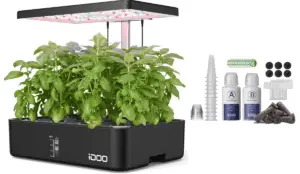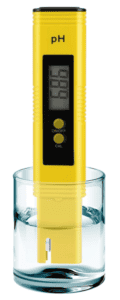According to agricultural engineer Dr. Amanda Lee, “The two main drawbacks of aeroponics are the high initial setup costs and increased risk of crop failure if the system fails.”
With no growing medium and exposed roots, aeroponics requires precise control to succeed.
While faster growth rates and less water usage than soil can be achieved,
The advanced systems require significant upfront investment.
Without a backup plan, even brief interruptions to the misting schedule,
Temperature, or nutrients can quickly damage delicate roots and set back crops.
However, improvements in monitoring technology and redundant safeguards help mitigate risk.
When executed properly, many still find the productivity and resource conservation benefits worth the tradeoffs.
KEY TAKEAWAY
What are the disadvantages of aeroponics systems?
The disadvantages of aeroponics (1) include challenges such as system complexity, susceptibility to pump failures, and the need for regular monitoring and maintenance.
Understanding these drawbacks is crucial for successful aeroponic gardening or farming.
What is Aeroponics? How Does the System Work?
Aeroponics relies on air and a fine mist containing nutrient rich solutions instead of soil to grow plants.
It works through aeroponic systems.
Plant roots are suspended in a root chamber filled with air.
Nutrient-rich water is then misted onto the roots.
The system uses a reservoir, pump, and root chamber.
A reservoir holds the nutrient solution.
A pump sends the solution through tubes where it mixes with air and forms a fine mist.
This mist coats the suspended roots inside the chamber.
Grow lights above provide needed light.
Excess mist drains back to the reservoir for reuse.
What’s the difference between aeroponics and hydroponics? Aeroponics is similar to hydroponics which uses water instead of soil.
One main difference, hydroponics submerges roots but aeroponics intermittently mists roots exposed to air.
Some experts say aeroponic roots thrive better with this arrangement, having access to both air and moisture without sitting overlong in solution.
Both methods allow year-round growth of aeroponic plants in controlled environments.
Compared to traditional soil gardens, the benefits of aeroponics include healthier plants through an optimal root zone.
Studies also find aeroponically grown plants can grow faster and with larger harvests. (2)
It also saves tremendous amounts of water, using up to 95% less for water consumption and water usage.
The system precisely delivers a high pressure mist containing nutrient directly to the roots as well.
Overall aeroponics proves a sustainable option for growing plants.
Types of Aeroponic Systems
Pressure aeroponics
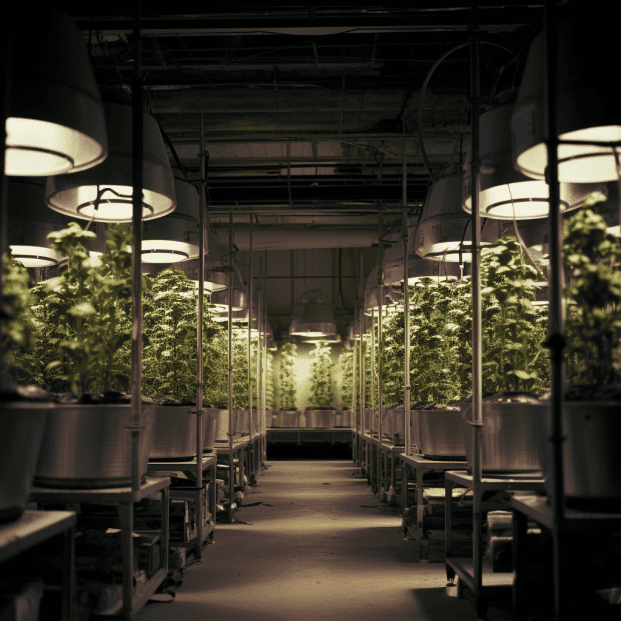
This style uses air pressure pumps to force a nutrient-rich mist at high pressure onto exposed plant roots.
The pressure pumps efficiently coat roots so they can maximally absorb nutrients and water from the pressure mist containing nutrient rich solution.
This works well for leafy greens requiring moisture but able to thrive with good air circulation.
Nutrient film technique (NFT)
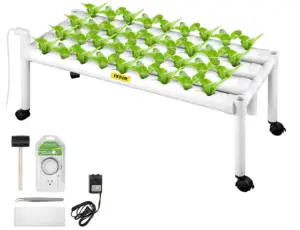
NFT designs involve shallow irrigation channels that occasionally flood roots with oxygen-enriched nutrients.
The channels provide both moisture and oxygen to roots, preventing many plant diseases caused by wet conditions.
Roots receive intermittent nutrient absorption this way as plants are grown along gutters filled for just short periods.
Ebb and flow systems
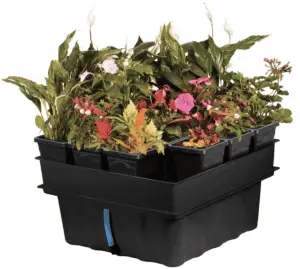
Ebb and flow partially submerges roots by briefly…
…flooding them in nutrient trays filled from a reservoir and irrigation channels.
The trays then drain away, exposing roots to air flow between feedings.
This style suits a variety of crops and minimizes excess moisture issues through the drain-and-dry approach.
Farmers pick a system designed for their space and the types of plants they aim to cultivate through hydroponic gardening.
When properly managed, all provide efficient, pest-free ways to successfully…
…grow healthy crops for those captivated by the science of growing without soil.
Quick Overview of Disadvantages of Hydroponics
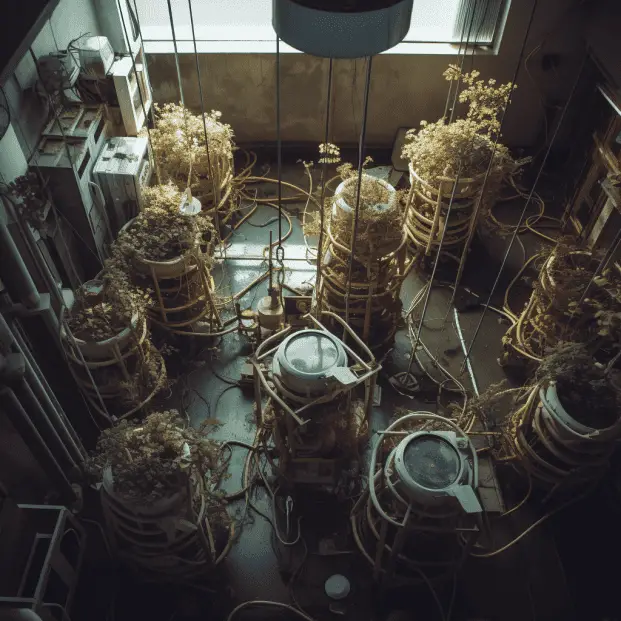
All farming techniques come with pros and cons.
While hydroponics offers benefits like water conservation, some downsides exist to consider.
Hydroponic systems require more intricate equipment and facilities than simple soil plots.
Expensive initial investments of hundreds of dollars are needed for systems, nutrient solutions, and growth lights.
Problems arise if any pump or tube clogs or springs a leak.
Malfunctions can ruin entire crops.
Another issue comes from the growing medium hydroponics uses.
Rockwool and other artificial substitutes lack traits of natural soil and sometimes lock up nutrients plants need.
Growers must constantly monitor and adjust pH levels and temperatures in liquid environments too.
Root rot often plagues hydroponically grown veggies with their roots always submerged.
Fungal and bacterial diseases flourish unless hydrogen peroxide or other sterilizing agents are added.
Deep water cultures are most problematic, causing faster plant decline.
Outdoors, equipment relies on consistent electricity to function.
Power outages mean crops lose their nutrient source and light until repairs are made.
Whereas natural soil still feeds plants during short-lived blackouts.
These disadvantages make hydroponics better suited to controlled greenhouse settings.
Constant Monitoring Requirement
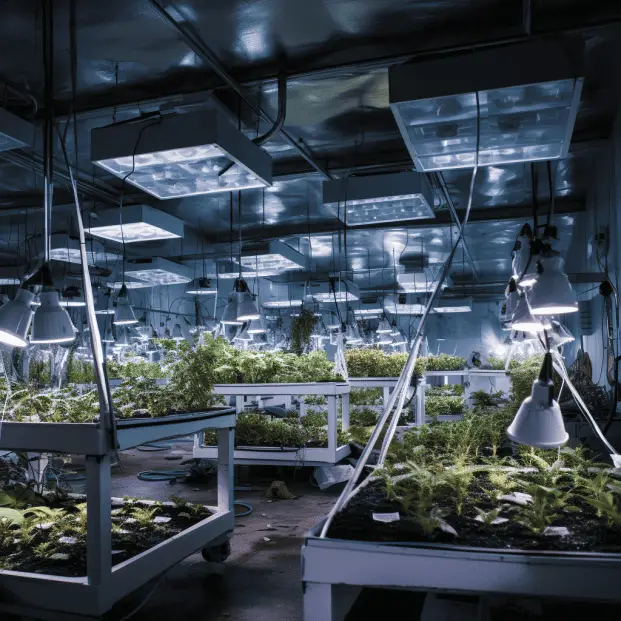
One downside of aeroponics is the need for constant monitoring.
Since plant roots are suspended in air inside a sealed container,
Any interruption in the misting cycle can quickly lead to drought stress on the roots of the plants.
As an experienced aeroponic gardener,
I’ve learned to inspect my system daily to ensure all parts are working properly to keep the roots are exposed and nourished.
Aeroponic systems create an intermittent fine mist to coat the roots suspended in the air.
But it only takes a clogged nozzle or brief power outage for the moisture supply to stop, leaving roots dry.
Unlike soil which still holds some water than traditional gardening,
There is no buffer in an aeroponics setup.
If the system maintenance is neglected for even a few hours, plants may suffer irreversibly.
I typically check my reservoir water level, pH and electrical conductivity three times a week minimum.
Any drop or rise requires adjustments to keep the nutrients circulating from…
…the top of a reservoir through tubing and nozzles in optimal balance.
Constant observation is crucial since hydroponics vs aeroponics techniques don’t allow…
…for the same leeway as outdoor soil plots when it comes to daily inspections.
The tradeoff for minimized soil and water usage means diligence for hydroponics and aeroponics adopters.
Higher Initial Setup System Costs
Aeroponic systems carry higher startup costs than other gardening methods.
All the equipment like pumps, tubing, and misters adds up.
For small home systems, expect to invest $300 to $1000 just to get set up.
Commercial aeroponic farms require huge greenhouse facilities and…
…advanced systems costing hundreds of thousands to millions of dollars.
Now, the increased yields and faster harvests offset these expenses over time.
But hydroponic systems generally cost less to implement for smaller growing areas.
If investing in a complex aeroponic setup as a beginner, start small to keep initial costs down.
Going overboard on a fancy system you can’t maintain is wasted money.
Vulnerability to Power Outages
Aeroponic systems depend on electricity to power the water pumps and misters.
Any interruption in power can be catastrophic.
Without the mist to nourish their roots, plants quickly become stressed.
Prolonged outages of 4-6 hours can be fatal.
Backup generators or battery powered systems are essential for large aeroponic farms.
But these add to costs.
For home setups, small power banks can run smaller systems for short durations.
Monitoring weather and being prepared to switch to battery power is key.
I also recommend having a secondary irrigation method like hand-watering for emergencies.
It’s not as efficient but can save plants if the power goes out.
Overall, the reliance on electricity is a definite downside.
But with proper backup plans, power outages don’t have to mean dead plants.
Essential Technical Knowledge
Operating an aeroponic system requires specialized technical knowledge.
Understanding the optimal pressure, misting duration, flow rates, and equipment involved takes learning.
Unlike soil gardening, you can’t just poke some seeds in the ground and sprinkle water.
Aeroponics utilizes advanced hydroponic techniques.
From water pumps to PH levels to hydroponic nutrients, there’s a learning curve.
Beginners should be prepared to study up before diving in.
While aeroponic kits simplify things, you still need horticultural know-how for success.
Patience and persistence through the technical aspects pays off…
…with greater plant health and productivity in these systems.
Technical Glitches and Maintenance
Aeroponic systems require rigorous maintenance to avoid technical issues.
The many moving parts like pumps, valves, and misters can malfunction over time.
Nozzles clog, tubing cracks, and electronic components fail without warning.
pH fluctuations and nutrient imbalances can also create problems.
Unlike soil gardening, even small issues quickly impact plant health when the roots hang in the balance.
Troubleshooting aeroponic systems demands attentiveness and problem-solving skills.
Maintenance tasks like cleaning filters, checking tubing, and replacing worn parts are essential.
While hydroponics also requires this, aeroponics leaves zero margin of error for roots deprived of nutrients and oxygen.
Despite the maintenance, aeroponics gives unparalleled results when properly managed.
Just be prepared for the learning curve and upkeep required.
Comparison with Hydroponics
Aeroponics differs from hydroponics in several key ways that impact costs and complexity.
In hydroponics, plant roots grow in inert media like perlite, vermiculite or rockwool.
This provides support and reserves if the system fails.
In aeroponics, roots dangle in air and get misted with nutrients periodically.
This maximizes oxygen but leaves roots vulnerable.
Aeroponic systems require specialized misting equipment not needed for hydroponics.
But aeroponics consumes far less water and nutrients overall.
For small-scale growing, hydroponics tends to be more affordable and forgiving for beginners.
Aeroponics offers faster growth and higher yields for advanced users once mastered.
Both soilless methods have pros and cons to weigh based on your gardening goals and technical capabilities.
Challenges of Aeroponic Cultivation
Aeroponics can be highly productive, but presents unique challenges.
Consider these factors before starting:
- Requires vigilance – systems like mist nozzles and ultrasonic foggers need consistent monitoring as issues impacting the lower stem and root zone media arise quickly in this growing system.
- More technical skill needed than soil gardening. There’s a learning curve to master equipment involved in the precise aeroponics is the process like the misting system.
- Vulnerable to power outages. Reliable backup power for the growing chamber is important to keep the hydroponic plants nourished if the main power cuts off.
- Higher startup costs than other methods. Expenses include the farming system setup, nutrients, and protective system components. Budget accordingly.
- Not as forgiving as hydroponic farming – no root media protects roots if the nozzle or pump aeroponic equipment fails briefly.
- Intensive maintenance and regular cleaning is required to avoid any clogged or malfunctioning parts in the farming system.
While these demands are higher, understanding them leads to greater success once you get the hang of this method! A bit of effort pays off tremendously in optimized plant growth and harvests.
Is Aeroponics Right for You?
Aeroponic systems require an investment of time, effort and money.
But the potential advantages are unmatched:
- Ultra-efficient use of space, water and nutrients
- Accelerated growth rates and plant health
- Higher yields per square foot than any other method
- Less labor than traditional gardening after setup
- Year-round optimized growing environment
If these benefits outweigh the drawbacks for your needs, aeroponics can be a game-changer.
Casual gardeners may prefer the simplicity of soil or hydroponics though.
Determine your goals and commitment level before jumping in.
With realistic expectations about the commitment aeroponics requires,
You can minimize frustrations and maximize results.
I hope these insights from an aeroponics veteran help you make…
…the most informed choice to turn your green thumb dreams into reality!
Aeroponics vs Hydroponics, Which to Choose?
Whether aeroponics or hydroponics is superior depends on individual farming needs.
Both foster faster plant growth and higher yields than traditional dirt gardens.
Yet each approach has strengths the other lacks.
Aeroponics keeps roots suspended in air, avoiding root rot risk.
It also uses a mere fraction of the water hydroponics requires.
However, aeroponic systems necessitate more intricate misting equipment that must work flawlessly.
Hydroponics finds roots constantly immersed in nutrients for reliable feeding.
But it faces draining and pH regulation hurdles aeroponics sidesteps.
Hydroponic crops also may not achieve the enormous sizes some studies claim for aeroponically grown plants.
For commercial farms and nurseries, hydroponics wide array of growing mediums make it very versatile.
But limited space home growers appreciate aeroponics minimal footprints and resources usage.
All things weighed, both revolutionize how we cultivate in controlled,
Sustainable ways depending on individual root systems demands.
With advantages seen on both sides, the method that best befits particular needs makes the optimal choice.
Conclusion
While aeroponics has disadvantages to consider,
The advanced gardening method can still be highly effective when set up properly.
The main downsides are the high initial investment required for equipment like…
…misters and monitoring systems, and the increased risk of crop failures if that sensitive equipment fails.
However, new technologies are making aeroponic systems more affordable and reliable over time.
Monitoring devices can now precisely control conditions and…
…prevent root damage that leads to plant losses.
Redundant equipment provides backup if part of the system malfunctions.
So for many farmers and greenhouse growers, the productivity gains from faster growth,
The water savings from recirculating nutrient solutions,
And the land use efficiency of vertical stacking still make aeroponics advantageous overall.
Proper preparation and preventative maintenance helps ensure these…
…benefits outweigh the potential pitfalls.
Let us know if you have any other questions about weighing the pros and cons of aeroponic gardening methods!
References
- https://www.sciencedirect.com/topics/agricultural-and-biological-sciences/aeroponics#:~:text=The%20biggest%20advantage%20of%20aeroponics,level%20of%20technical%20knowledge%20required.
- https://modernfarmer.com/2018/07/how-does-aeroponics-work/
Related Articles
- https://tophydroponicgarden.com/what-plants-can-be-grown-using-aeroponics/
- https://tophydroponicgarden.com/aeroponics/
- https://tophydroponicgarden.com/comparing-aeroponics-and-traditional-hydroponics/
Was this helpful?

I’m Barrie L., a passionate hydroponic gardening enthusiast dedicated to cultivating thriving, soil-less gardens. With a focus on all things hydroponic, I share my expertise on innovative growing techniques and sustainable practices through my blog, tophydroponicgarden.com. As a seasoned hydroponics specialist, my goal is to inspire and guide fellow gardeners in harnessing the power of water-based cultivation for bountiful and eco-friendly harvests. I’m also an author of the book “Hydroponics For Absolute Beginners: Your Step By Step Guide For How To Create An Hydroponics System At Home Without Soil, For Growing Vegetable, Fruit And Herbs.” which is sold on Amazon. Join me on a journey of redefining the way we cultivate plants, one nutrient-rich solution at a time. Happy growing!



